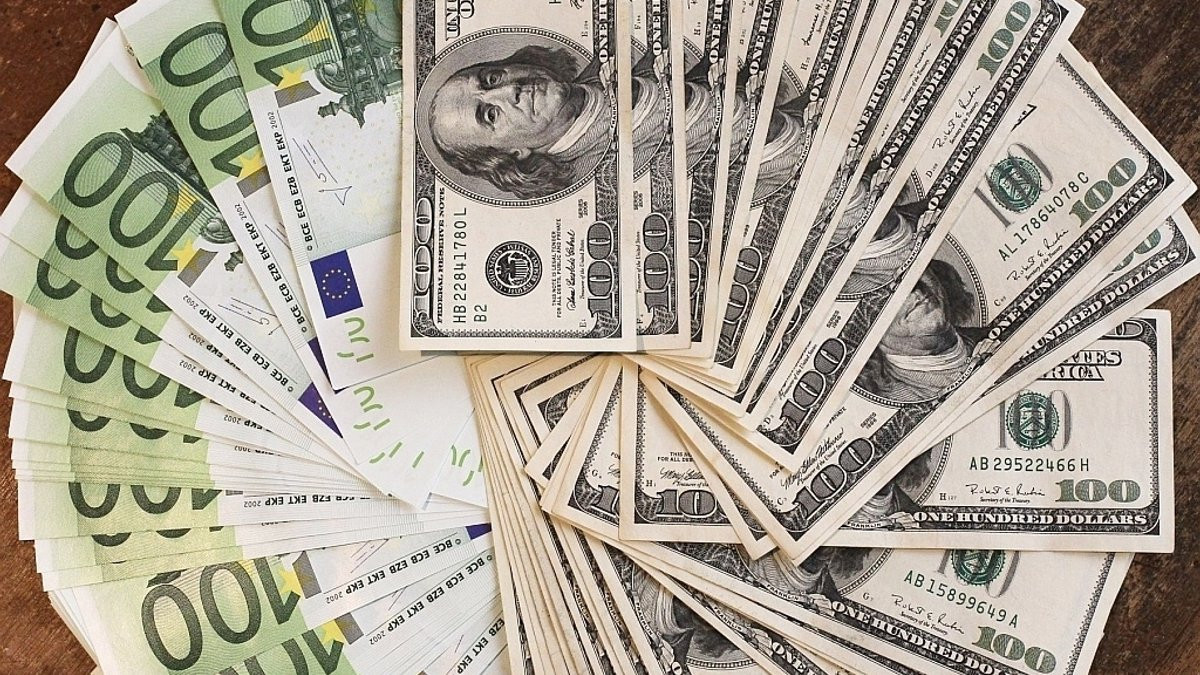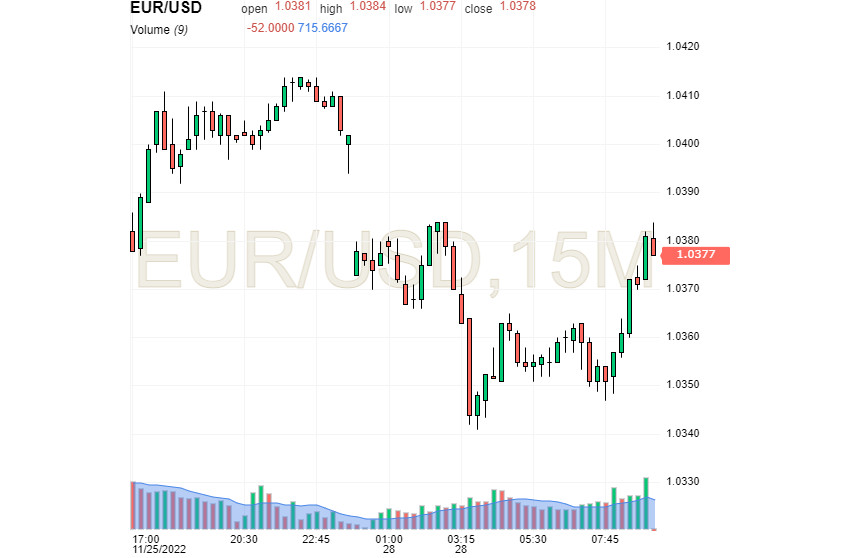
The dollar started the new week in an upbeat manner, continuing the positive trend of the previous trade. I expect the greenback to hold its current positions, though much depends on the Federal Reserve's strategy. Therefore, the euro has to catch up with its EUR/USD rival, acting with mixed results.
At the end of last week, the greenback was growing steadily across the whole market, but in general, it stayed near multi-month lows. The reason is the high probability that the Fed would slow the pace of its interest-rate hikes soon. This put serious pressure on the U.S. currency. Note that the dollar rose against most key currencies in 2022 on the back of aggressive interest rate hikes by the Fed. However, disappointing macro data on consumer prices in the U.S. made investors reconsider their attitude towards the USD and bet on the end of the dollar rally.
The dollar managed to win back some of its losses amid intensified quarantine restrictions in China due to another outbreak of COVID-19. At the moment, experts have marked a decline in risk appetite and investors' flight-to-safety, this means switching to safer investments like the USD. Market participants were alarmed by anti-lockdown protests in China, uncharacteristic for the country, as well as an increase in COVID-19 infections and the fall of the yuan amid volatile conditions in the financial market.
However, the greenback managed to benefit from the situation and showed growth. At the beginning of the week, the traditional safe-haven asset gained in price, though EUR/USD fell in price by 0.43% to 1.0357. Many traders are still walking away from risk amid strikes taking place in China. This keeps the dollar afloat, but negatively affects the euro. On Monday morning, November 28, EUR/USD was trading at 1.0377 trying to hold on to its current positions.

According to analysts, US macro data will add more pressure on the dollar, namely the Nonfarm Payrolls data that is set to be released on Friday, December 2, which is expected to rise by 208,000, job openings from JOLTS to be released on Wednesday, November 30 and the ISM manufacturing index to be released on Thursday, December 1. At the same time, experts anticipate the index to fall from the current 50.2 points to 49.8 points. Experts believe that positive statistics on the US labor market will support the USD.
As for the euro, it has fallen in price against the British, Australian and New Zealand currencies over the past few days. According to preliminary forecasts, we should expect the euro to fall against the greenback. Experts do not dismiss the possibility that this negative trend will gather momentum. As a result, the EUR/USD pair may return to parity in the coming weeks. According to analysts, the energy crisis in the eurozone will have a negative impact on the euro's dynamics. In addition, the fact that gas prices are rising in Europe will also be a factor in weakening the euro.
At the moment, assessing the prospects of the current monetary policy is crucial for the EUR/USD pair. Fed Chairman Jerome Powell will deliver a speech on Wednesday, November 30, at which the state of the labor market in the United States and the national economy will be considered. Market participants anticipate signals about the further trajectory of monetary policy. According to Simon Harvey, currency analyst at Monex Europe, "Powell's first comments since the November 2 meeting will be crucial. If he doesn't push back on the recent loosening in financial conditions, the dollar's near-term support may slip."
According to analysts, the key factor in the USD growth is investors' expectations regarding the tightening of the Fed's monetary policy. Market participants expect the central bank to slow the pace of its interest-rate hikes to 50 bps. If the Fed maintains a tough stance at the December meeting, the market will see the dollar's surge. At the same time, many believe that next year the Fed will set a pause in the process of hiking rates.





















